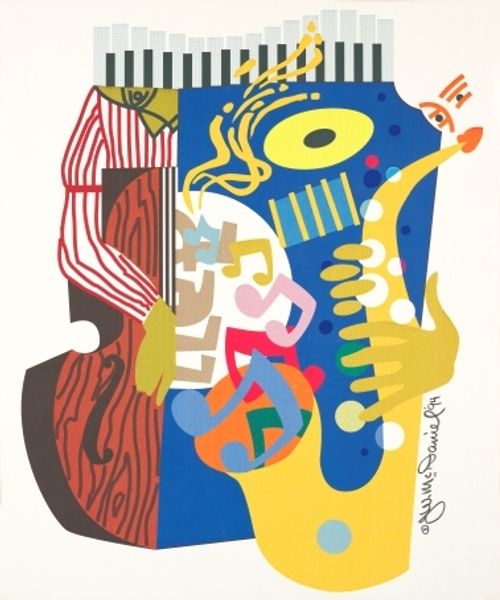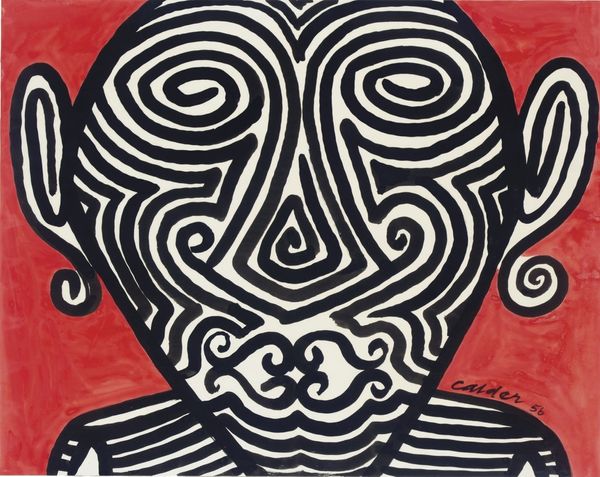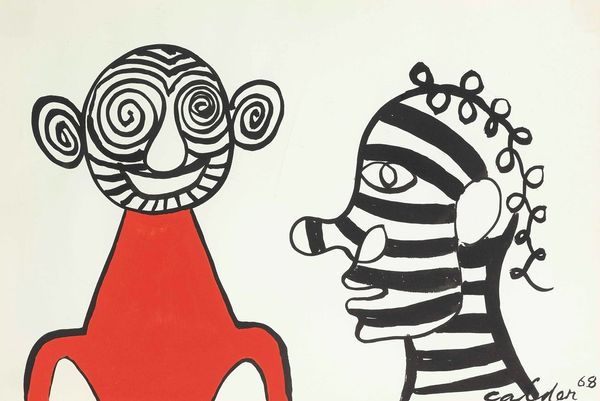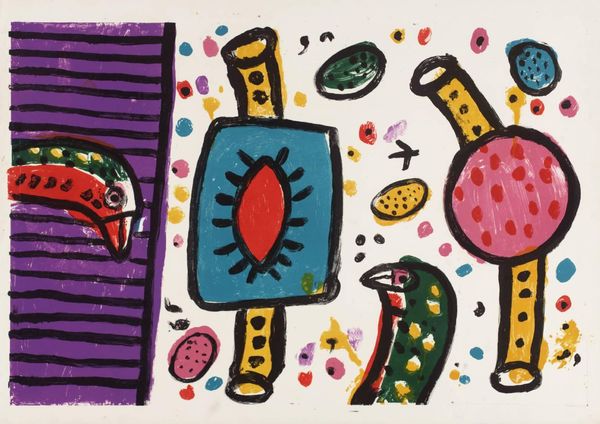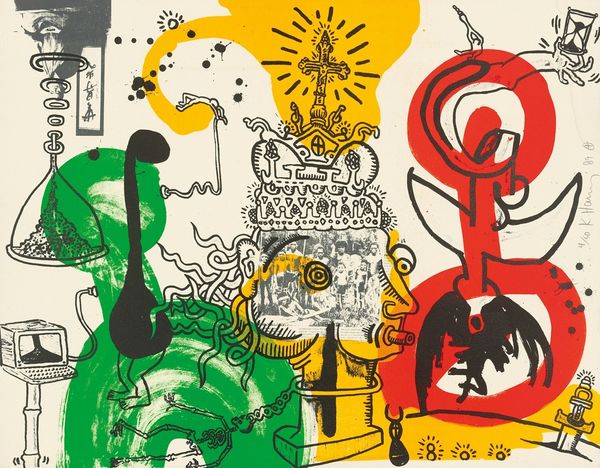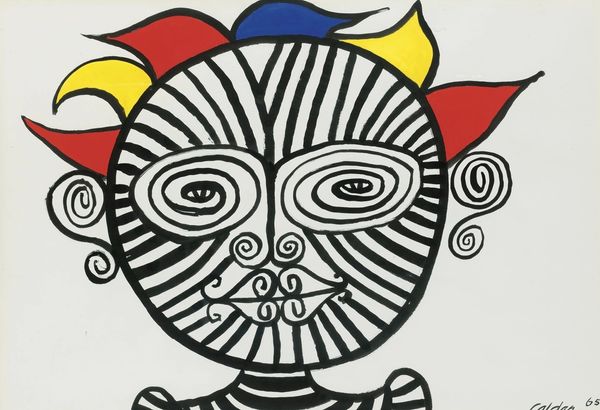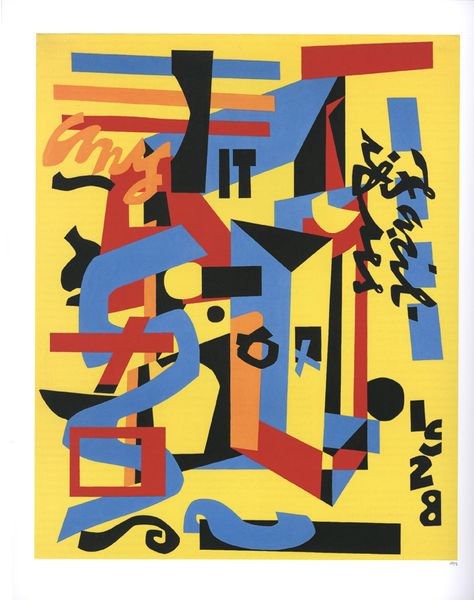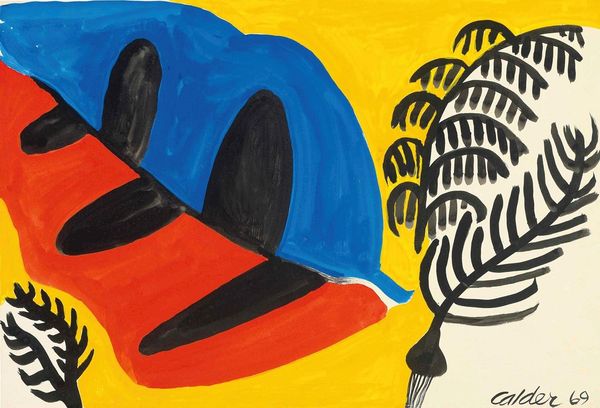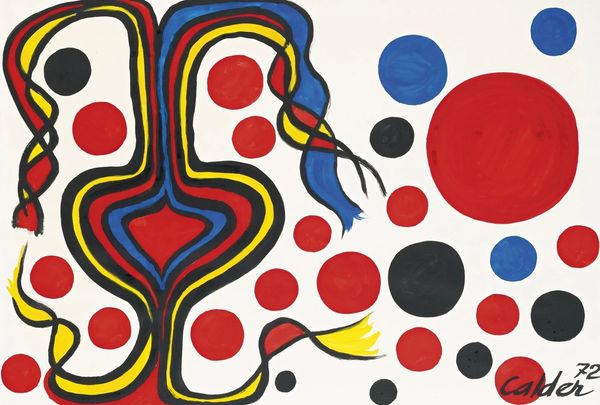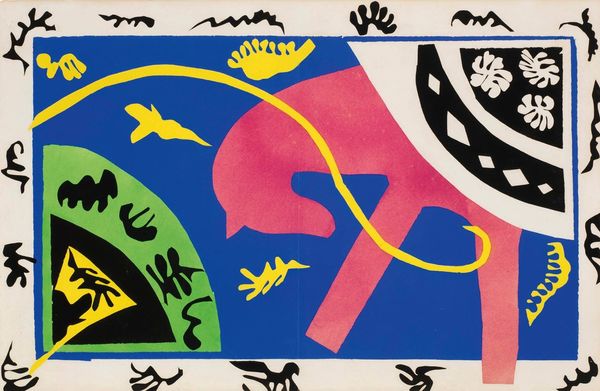
painting, acrylic-paint
#
portrait
#
popart
#
painting
#
pop art
#
acrylic-paint
#
form
#
word art
#
geometric
#
abstraction
#
pop-art
#
line
#
modernism
Copyright: Modern Artists: Artvee
Curator: Standing before us is Alexander Calder's "The Blue Lady and Profiles," painted in 1963 using acrylic paint. Editor: My initial impression is that it feels so playful! Like Matisse gone totally, wonderfully bonkers. It's a cast of characters in some madcap, colourful stage production. Curator: Indeed! Calder, primarily known for his sculptures, or mobiles, as he termed them, frequently used painting as another medium to explore similar artistic interests. It's interesting to consider this work within the context of his broader body of work. One question here is to what extent Calder uses visual conventions to create recognizable or readable profiles? Editor: And not just any profiles, but characters, even! The bright colors – that unapologetic blue, the screaming yellow – give it this Pop Art zing. It reminds us to not take ourselves so seriously! Curator: The use of primary colors does certainly resonate with the Pop Art movement popular at the time, although Calder had begun similar stylistic explorations decades prior. This alignment in style allowed for exhibits in the 60's to display Calder alongside Andy Warhol and Roy Lichtenstein, as for instance at the Galerie Der Spiegel in Cologne. Editor: Do you ever think that a playful colour scheme might also be interpreted to distract audiences? Those bold lines, the simple shapes – it all feels very immediate, very direct. And it keeps you from perhaps searching for the "meaning," if we think one is even meant to be derived. Curator: Meaning is subjective, of course. However, Calder's paintings often get overlooked in favour of his sculptures, yet they played a crucial role in the evolution of his abstract language. They acted almost as blueprints for his three-dimensional works. One thing which interests me here is whether such prints should always be thought of merely as 'preparatory studies'? Or do such works serve another artistic function of their own? Editor: Food for thought indeed! Calder certainly stirs things up. Curator: Indeed. Calder challenges our expectations of both portraiture and abstraction in his own distinctive manner. Editor: And with a wink, I might add!
Comments
No comments
Be the first to comment and join the conversation on the ultimate creative platform.

